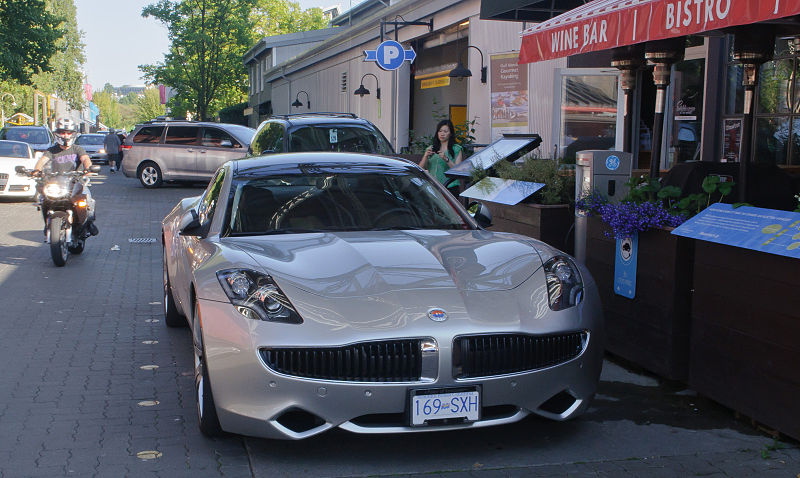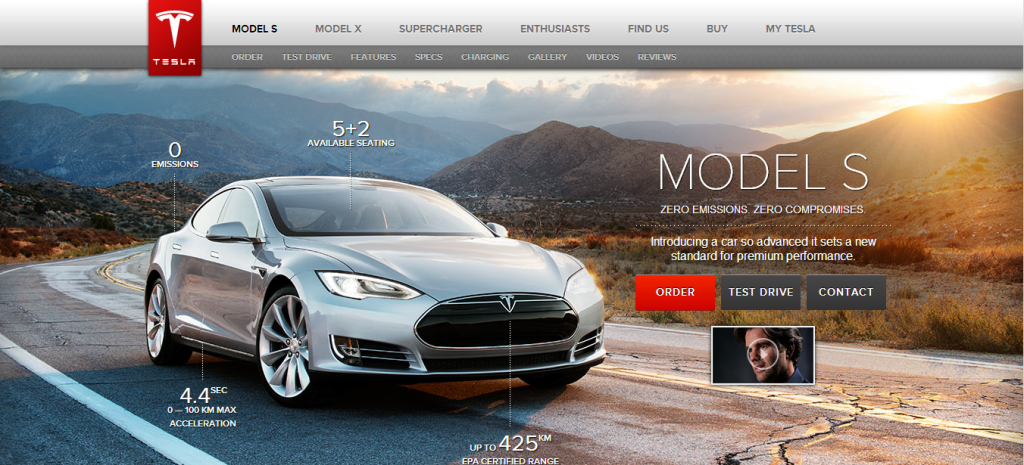February 28th, 2014 § § permalink

This month:
Electric cars, social psychology and the minimum wage.
Electric vehicles:

Seen at Granville Island, Vancouver.
Following Tesla’s ongoing success, the electric vehicle market is looking to get more crowded. Competing interests were attempting to take control of Fisker Automotive, which has now gone to Wanxiang which is a China-based multinational car parts manufacturer.
How Wanxiang could revive electric carmaker Fisker (Quartz)
Social psychology:
An analysis of girls’ performances in school chess tournaments identified a trend that girls lost more often to boys than was expected, given their skill ratings and those of their prior opponents.
A lack of female role models sometimes leads to potentially damaging stereotype threats, one that is best remedied earlier on. If the threat can be resolved before adulthood girls will better maximise their potential.
Girls underperform when they play chess against boys – real-life evidence of stereotype threat? (via British Psychological Society Research Digest)
Minimum wage:
While it’s too late for Walmart to shake off its public image of a “exploitative employer” at the lower income brackets, other firms can still enact pre-emptive policies. The clothing retailer GAP committed to increase minimum wages within the next 11 months across its umbrella that includes Old Navy and Banana Republic.
Why Wal-Mart should support a higher minimum wage (Quartz)
February 18th, 2014 § § permalink

An electric vehicle itself may be zero-emissions but what about the fuel source? This question could undermine the appeal of electric vehicles, unless policies are already in place to account for these shortcomings.

Source: Tennessee Valley Authority
The measure to remember is the CO2 emissions per unit distance traveled, even if it was not directly emitted by the car! If a hypothetical Tesla Model S travels 1 km using energy that emitted 5 g of CO2 by its generation (in a fossil-fuel power station) then it is less “green” than another hypothetical Honda Civic that emitted 3 g of CO2 burning diesel on its own.
The above may be the case in China, Tesla’s newest and largest target market where the bulk of energy is generated using coal-fired power stations. In contrast, a Model S charged using the power grid in Norway where Tesla’s newest iteration recently became the best-selling car, has a lower CO2 footprint because hydroelectricity is the primary source of power in the Scandinavian kingdom.
According to the paper by Babaee and friends (link below) the crucial element to reducing air pollution are policy mandates to limit carbon dioxide emissions. Continuing with the example, Norway has strict policies levying additional charges based on emissions resulting in electric cars having a price advantage which contributed to the appeal of the Model S and other electric and low-emission vehicles. Until other places do the same, incentive discrepancies will continue to exist.
Sources:
How Much Do Electric Drive Vehicles Matter to Future U.S. Emissions? (Environmental Science and Technology via Scientific American)
Tesla readies for Model S sales in China (Gigaom)
Norway’s best-selling car (Bilnorge.no)
February 10th, 2014 § § permalink

Tesla entered the automotive market in 2006 with a car no sane person would buy: a shiny electric car of the future tied to charging stations that barely existed. They had to adopt a strategy more familiar to the technology industry than that of run-of-the-mill car-makers. If no sane person would buy it, who would they target?
Enter the Tesla Roadster. All-electric and all of US$128,500. With a high-end product aimed at the luxury sports-car niche, Tesla waited for the consumer market in electric vehicles to mature. It paid off. Tesla spent the time developing a car that targeted a lower price point. The Tesla Model S, released in 2012, is currently priced at US$65,000 thanks to U.S. federal tax credit. Its next model, code-named BlueStar, will be a $30,000 car targeting the mass-market. At this price range, low-end BMWs and the rest of the usual choices are going to look a comparative joke.

The Model S displayed on Tesla’s Canadian regional site
And why not?
An incident on the 14th of January this year was a source of many chuckles. The U.S. National Highway Safety Administration released two recalls related to problems that could cause fires. One was from Tesla Motors and the other from GM. Owners of 370,000 General Motors vehicles will need to take time out of their day to turn in their cars and pickups at dealerships’ for updates. In Tesla’s case, 29,222 happy owners got their fixes over-the-air, a la Apple iPhone software upgrades.
Of course, this sort of fix is limited to software problems. However it does indicate two things: 1) Tesla is getting things right, more so than an established player like General Motors, and 2) Electric cars, once a source of derision due to unreliability and infeasibility, are no longer the butt-end of the joke.
Market sentiment agrees. Barely one year ago, Tesla share price was at US$39. Today it’s US$196. Now if Elon Musk’s hints about a new plant in China hold any promise, Tesla will find that its planned entry into the potentially lucrative Chinese market propels that value even higher just that much faster.

Source: Google Finance
Sources:
Tesla Motors’ Over-the-Air Repairs Are the Way Forward (MIT Techonology Review)
I bet on Tesla because most investors don’t understand electric cars (The Globe and Mail)






